If you’ve noticed the leaves on your potato plants turning yellow, you’re likely wondering what could be causing it and how to fix it. Yellowing of potato plant leaves is usually caused by a few different factors, which can include everything from nutrient deficiencies in the soil to disease and pests. Fortunately, this problem is fairly easy to diagnose and treat. Here, we’ll provide some tips on how to fix potato plants with yellow leaves.
The Importance of Potatoes in Agriculture
Potatoes are an essential part of the global food supply, providing sustenance to millions of people around the world. They also help farmers produce higher yields and reduce crop losses due to pests or disease.
As a result, understanding how to keep potato plants healthy and productive is an important part of modern agricultural practices.[1]What Are the Reasons Behind a Potato Plant Turning Yellow?
Disease Infections
Potatoes can be affected by a number of diseases, including potato blight and bacterial wilt. Blight is caused by a fungus that infects the leaves and stems of potatoes, causing them to turn yellow and eventually die off.

Bacterial wilt is caused by bacteria that invade the vascular system of the plant, blocking water flow and causing wilting. Both of these diseases can be controlled with fungicides and other treatments.[2]
Insect Attack
Insect pests can also cause potato plant leaves to turn yellow. The Colorado Potato Beetle is one of the most destructive pests of potatoes, feeding on both the foliage and tubers. Other possible culprits include aphids, mites, flea beetles, wireworms, and cutworms. Controlling these insects may involve using insecticides or other control methods.
Stress From Heat or Cold
Extreme temperatures can also cause potato leaves to yellow. In hot weather, potatoes may suffer from heat stress, which causes the leaves to turn light green then yellow. In cold weather, frost damage can occur when temperatures drop below freezing for an extended period of time. Protecting plants from extreme temperatures with a row cover or other protection can help prevent this type of damage.
Not Enough Sunlight
Potatoes need at least 6 hours of direct sunlight each day in order to grow and produce a good crop. If the plants are not getting enough light, the leaves may turn yellow as a result.
Adding Too Much Water
Potatoes do not need a lot of water, and overwatering can lead to yellow leaves. Stick to a regular watering schedule that provides just enough moisture for the plants to thrive without drowning them in too much H2O.[2]
Cold Temperature Stress
One of the most common reasons for potato plant leaves to turn yellow is cold temperature stress. This can occur when temperatures drop below 50 degrees Fahrenheit for an extended period of time, which can cause the foliage to appear yellow or chlorotic. Using row covers and other protective measures can help prevent this type of damage.
Mineral Deficiency
Potatoes need a number of essential minerals in order to grow and produce a good crop. A lack of one or more of these minerals, such as nitrogen, phosphorus, potassium, zinc, iron, or magnesium can lead to yellow leaves.
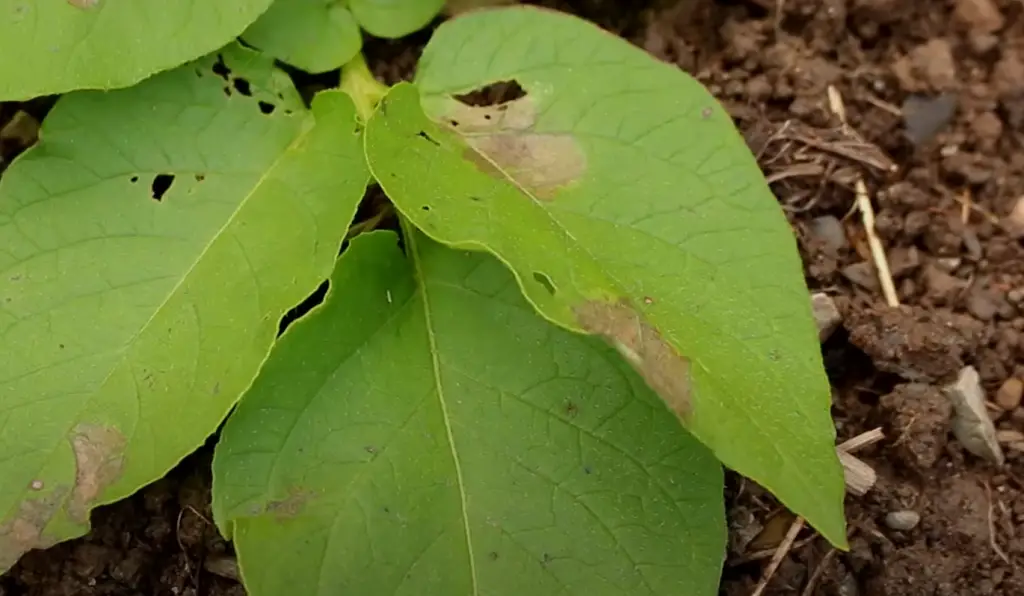
Having your soil tested can help you determine which nutrients are lacking and how to supplement them properly. Fertilizing regularly with a balanced fertilizer can also help keep your plants happy and healthy.
Nutrient Toxicity
Nutrient toxicity can also cause yellow leaves on potato plants. This type of damage is caused by too much of a certain nutrient, usually nitrogen or potassium. If you suspect that your plants may be suffering from nutrient toxicity, the best way to correct it is by flushing the soil with plenty of water.
Bacterial Diseases
Bacterial diseases, such as bacterial ring rot or soft rot, can also cause potato leaves to turn yellow. These diseases usually result from infected seed potatoes and can be difficult to control once they occur. Using disease-free seed potatoes and practicing good hygiene in your garden is the best way to prevent these types of problems.[1]
Wilt (Fungal Disease)
Fungal diseases, such as late blight and verticillium wilt can also cause yellow leaves on potato plants. These diseases are caused by fungi that invade the plant tissue, causing it to become discolored and wilted. Controlling these diseases may involve using fungicides or other treatments.
Potato Leaf Miners
Potato leaf miners are tiny larvae that feed on the leaves of potato plants, causing them to turn yellow. These pests can be difficult to control because they live inside the leaves and are protected from most insecticides. Neem oil or other natural controls may help reduce their numbers in your garden.[1]
Potato Psyllid
The potato psyllid is a small, winged insect that feeds on the foliage of potatoes. This pest can cause serious damage to potato plants in large numbers, causing yellow discoloration of leaves and stunted growth. Controlling this pest may involve using insecticides or other control methods.
Late or Early Blight
Late or early blight is a fungus that can cause yellow leaves on potato plants. This disease is caused by the fungus Phytophthora infestans and can be difficult to control once it occurs. Controlling this disease may involve using fungicides or other treatments.
Too Much Nitrogen
Too much nitrogen can also cause potato plants to turn yellow. This is because a high level of nitrogen in the soil can lead to an excess of foliage growth, which can shade out developing tubers and reduce yields.
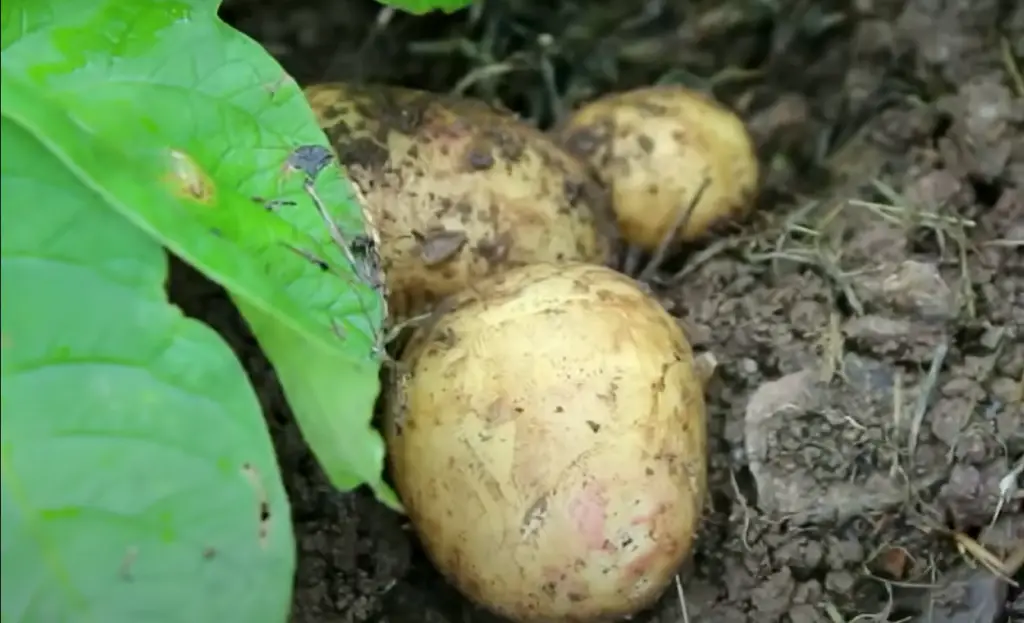
Too much nitrogen may also cause root damage. It’s important to make sure that your soil is not too rich in this nutrient when growing potatoes.
Waterlogged Soil
Waterlogged soil can also cause potato plants to turn yellow. This is because wet and soggy conditions can create anaerobic soil environments, which can lead to root damage and reduce yields. Be sure not to over water your potatoes and make sure that the soil has good drainage in order to prevent this type of damage.[1]
How Do You Fix a Yellow Potato Plant?
Treat Diseases and Pests
The best way to fix a yellow potato plant is by treating any diseases or pests that may be causing the problem. This may involve using insecticides, fungicides, or other control methods to get rid of the pests or disease organisms. It’s important to identify the exact cause of the problem before attempting any treatments.[3]
Improve Soil Conditions
Improving soil conditions can also help fix yellow potato plants. This may involve adding organic matter to the soil, such as compost or manure, which can improve drainage and add essential nutrients. Making sure that your soil is not too rich in nitrogen can also help prevent yellowing of leaves.
Apply Sufficient Water
Applying enough water is also important for keeping potato plants healthy. Stick to a regular watering schedule and provide just enough moisture for the plants to thrive without overwatering them. This will help prevent yellow leaves from occurring due to lack of water or too much water.[3]
Focus on Lighting
Providing enough sunlight is also important for preventing yellow leaves on potato plants. Make sure that your potatoes have access to plenty of sunlight by planting them in an area with full sun exposure. This will help ensure the health and vigor of your plants, while also helping to prevent yellowing of the leaves.
Deal With Temperature Stresses Smartly
Temperature stresses can also cause potato plants to turn yellow. To prevent this, use row covers or other protective measures such as cloches to protect your plants from extreme temperatures. Additionally, planting potatoes early in the season and harvesting them late can also help reduce exposure to heat stress and frost damage.
Keep a Check on Pests
It’s important to keep an eye out for pests that may be damaging your potato plants. If you notice any signs of insect or disease damage, take action quickly by treating the affected plants according to the directions on the label of your chosen treatment. This will help prevent further damage and hopefully restore your potatoes to their former health.
Apply Fertilizers Smartly
Applying fertilizers can also help keep your potato plants healthy and prevent yellow leaves from occurring. Make sure to use a fertilizer that is specially formulated for potatoes, such as one with a 3-1-2 or 4-1-2 nutrient ratio.
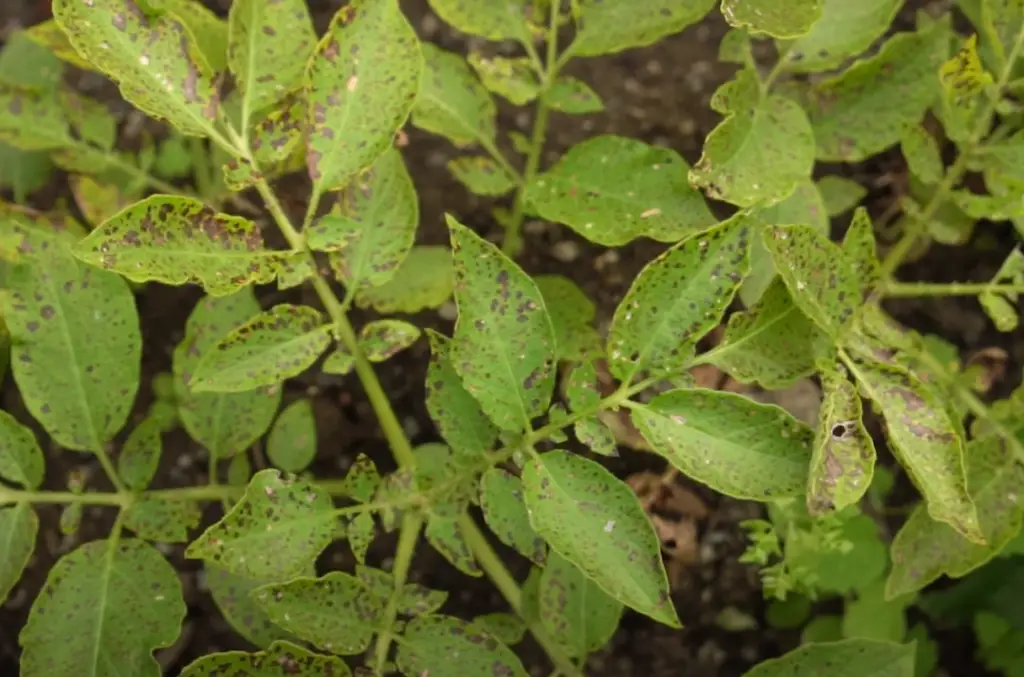
Following the directions on the label carefully will help ensure that you are providing your plants with just enough food, without overfeeding them.[3]
Use Resistant Varieties
Finally, using resistant varieties of potato can also help reduce the chances of yellow leaves occurring. Look for varieties that have been bred to be resistant to pests and diseases, such as late blight or verticillium wilt. This will help ensure that your plants remain healthy and productive throughout the growing season. Following these tips should help you keep your potato plants healthy and prevent yellow leaves from occurring. With a little bit of care and attention, you can have a bumper crop of potatoes this season![3]
How to prevent and treat yellowing potato leaves
Soil Testing and Fertilization to Address Nutrient Deficiencies
If the leaves on your potato plants are turning yellow, it could be a sign of nutrient deficiencies in the soil. To address this issue, you should have your soil tested to determine which nutrients are lacking and then apply a fertilizer that is rich in those elements. However, be sure to keep fertilization at moderate levels, as too much fertilizer can cause yellowing of leaves.[2]
Proper Watering Techniques Based on Soil Type and Weather Conditions
Proper watering techniques can also help prevent yellowing of potato leaves. Depending on the soil type and weather conditions, you should either water your plants regularly or provide them with deep, infrequent irrigation. Overwatering can cause yellow leaves to occur, so be sure to adjust your watering schedule accordingly.
Use of Pesticides or Natural Pest Control Methods
If yellowing of the leaves is caused by pests or disease, you may need to use pesticides or natural pest control methods. Always follow the directions on the pesticide label and use any other protective measures necessary before applying pesticides.
Proper Lighting and Temperature
Making sure that your potato plants are getting enough light is important for preventing yellow leaves. If planting in a garden bed, make sure to provide at least 6-8 hours of full sun exposure per day. Additionally, excessive heat or cold can also cause yellowing of the leaves, so be sure to provide plenty of shade during hot weather and use row covers or other protective measures when temperatures dip.
Providing Shade During Extreme Heat or Using Frost Protection During Cold Spells
During extreme heat, you can provide shade for your potato plants by using a canopy or other form of shading. This will help prevent the leaves from yellowing due to sun scorch or other heat-related stresses.
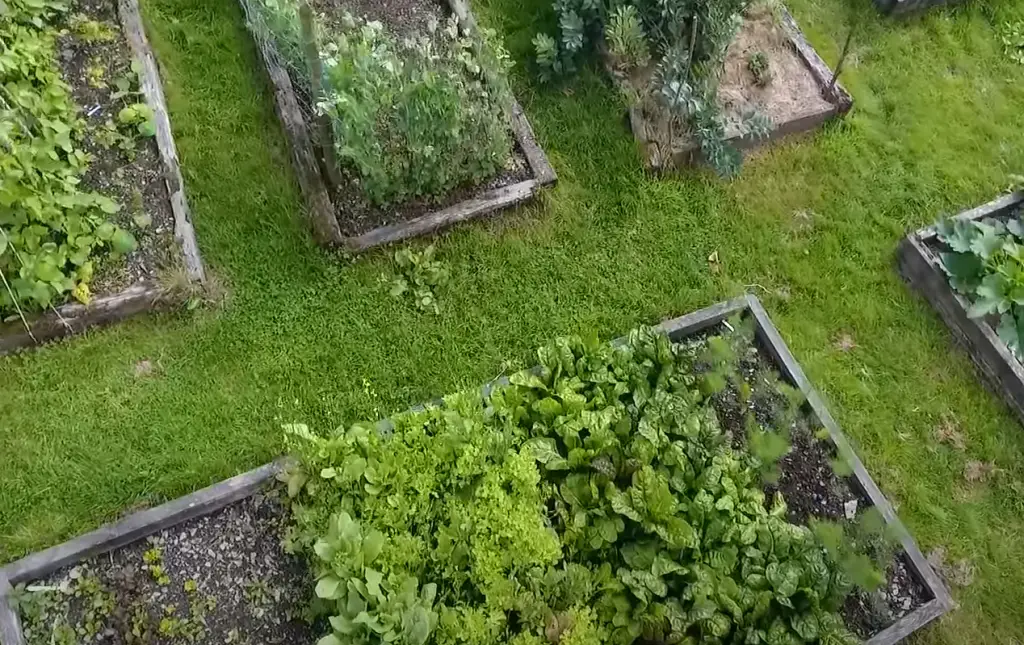
Additionally, frost protection methods such as row covers should also be used during cold spells in order to prevent yellowing caused by frost damage.[2]
FAQ
How do you reverse yellow leaves on plants?
The best way to reverse yellow leaves on plants is to identify and address the underlying cause. This may involve adding organic matter to the soil, providing sufficient water, focusing on lighting, dealing with temperature stresses smartly, keeping a check on pests, applying fertilizers correctly, and using resistant varieties of potato.
What to do if my potato plants are dying?
If your potato plants are dying, it could be due to a variety of factors. Check the soil for nutrient deficiencies and adjust accordingly, check for pests or disease damage and treat as necessary, make sure that they are getting enough light and water, and use frost protection methods during cold spells. Additionally, using resistant varieties of potatoes may also help prevent death due to pest or disease damage.
Can I save my potato plants?
Yes, with the right steps, you should be able to save your potato plants. Make sure that your soil is tested for nutrient deficiencies, address any pest or disease damage quickly, ensure the plants are getting enough light and water properly, and use frost protection methods during cold spells. A
Why does my potato plant look like it’s dying?
Potato plants can look like they are dying due to a variety of factors, including pest damage, disease damage, nutrient deficiencies in the soil, insufficient light or water, and frost damage. To address this issue, it’s important to identify the source of the problem and take steps to remedy it.
Can you treat potato wilt?
Yes, you can treat potato wilt. Late blight and verticillium wilt are common diseases that cause potato plants to wilt. To treat these diseases, you should use a fungicidal treatment that is labeled for potatoes or use natural pest control methods such as companion planting or crop rotation.
What is the lifespan of a potato plant?
The lifespan of a potato plant varies depending on the variety, environmental conditions, and other factors. Generally speaking, potato plants can last anywhere from 2 to 5 months with proper care and attention.
What does a diseased potato plant look like?
A diseased potato plant may have yellow, wilted leaves or look stunted. There may also be visible signs of disease such as spots on the leaves or stems. In some cases, the plant may have lesions or other abnormalities indicating a fungal infection. If you suspect that your potato plants are diseased, it’s important to take steps to address the problem right away in order to prevent it from spreading.
Useful Video: POTATO PLANTS TURNING YELLOW: WHY?
Conclusion
Potato plants can turn yellow for many different reasons, including nutrient deficiencies, pests or disease damage, insufficient light or water, and frost damage. To address this issue, it’s important to identify the source of the problem and take steps to remedy it. This may involve adding organic matter to the soil, providing sufficient water, focusing on lighting, dealing with temperature stresses smartly, keeping a check on pests, applying fertilizers correctly, and using resistant varieties of potato. With the right steps, you should be able to save your potato plants and ensure they stay healthy and productive.
References:
- https://www.evergreenseeds.com/potato-plants-turning-yellow/
- https://plantscraze.com/potato-plants-turning-yellow/
- https://gardengotime.com/yellowing-potato-leaves/





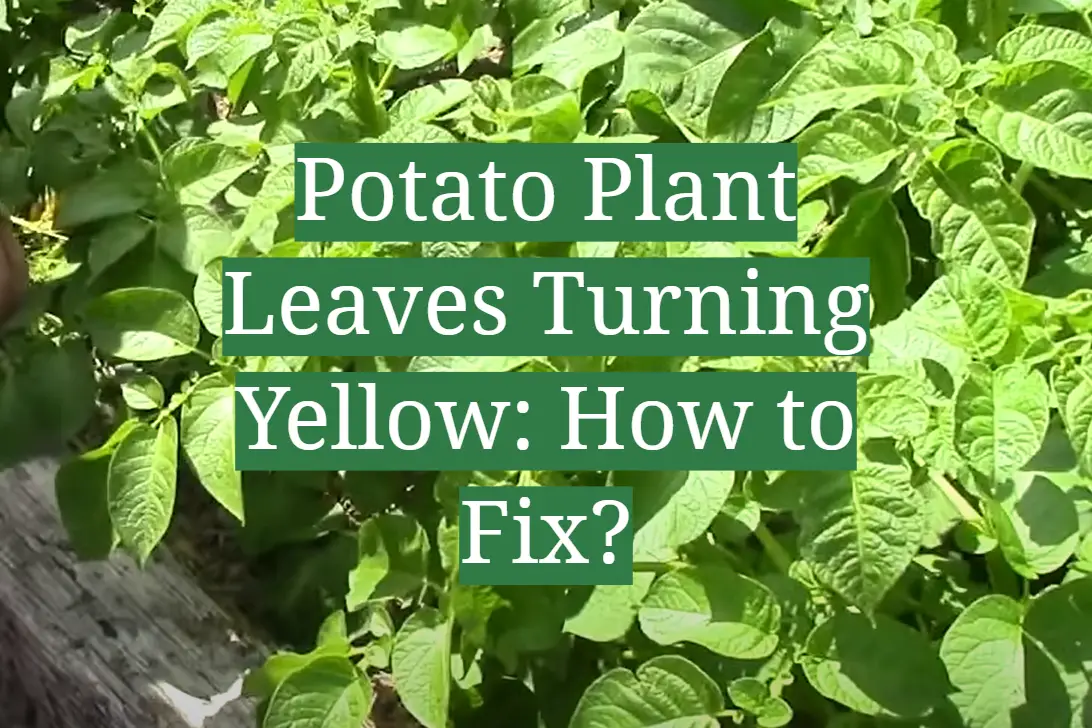

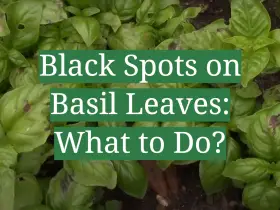
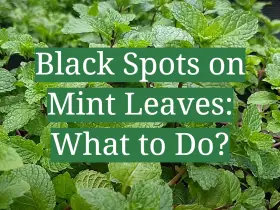
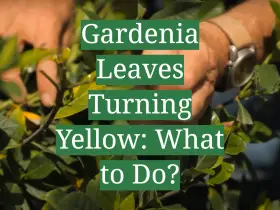
Leave a Reply
View Comments